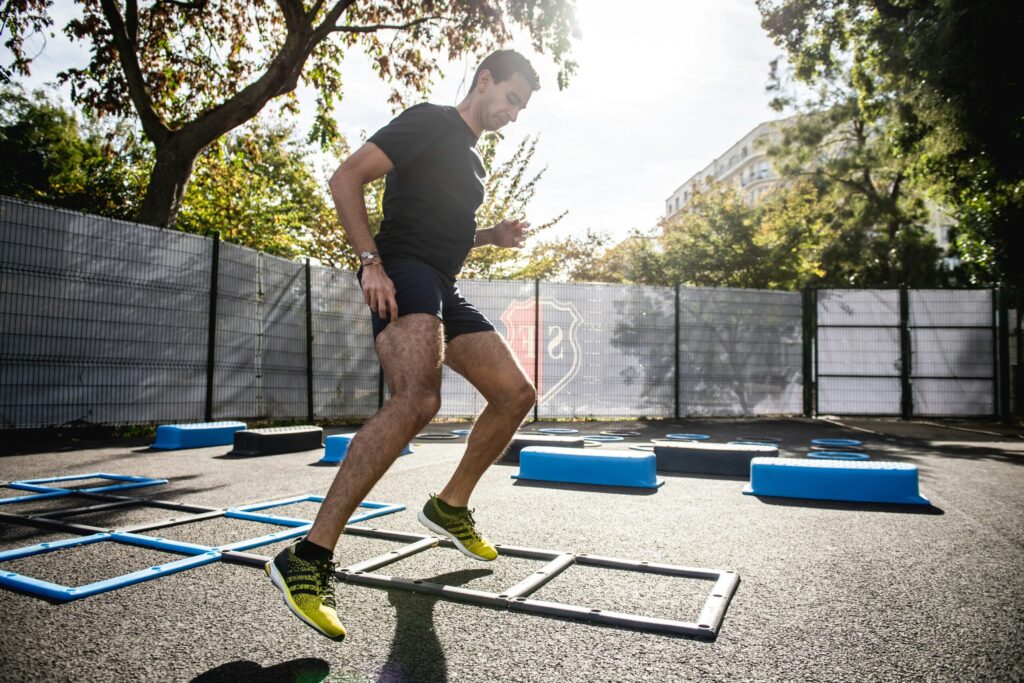Embracing Mindfulness in Your Fitness Routine for Enhanced Performance

Embracing Mindfulness in Your Fitness Routine for Enhanced Performance
In today’s fast-paced world, where distractions seem to lurk around every corner, the concept of mindfulness has emerged as a powerful tool—especially in the realm of fitness. Have you ever found yourself at the gym, mindlessly going through the motions while your thoughts wander to the grocery list or the latest episode of your favorite show? You’re not alone. This phenomenon is so common that it’s practically a rite of passage for gym-goers everywhere. But what if I told you that by embracing mindfulness within your fitness routine, you could not only enhance your performance but also cultivate a deeper connection with your body and mind?
Mindfulness, in its simplest form, refers to the practice of being fully present and engaged in the moment, without judgment. It’s about tuning into your body’s signals, recognizing your thoughts, and understanding your emotions as they come and go. Now, let’s dive into how this ancient practice can revolutionize your workouts and lead to enhanced performance.
The Science of Mindfulness and Performance
Research has steadily accumulated, indicating that mindfulness can positively impact physical performance. A significant number of studies (we’re talking double digits here) suggest that mindful practices can reduce anxiety, improve focus, and enhance recovery times—all of which contribute to better athletic performance. I remember reading a study that showed athletes who practiced mindfulness reported lower levels of stress and higher levels of motivation. It struck me that something as simple as paying attention could yield such profound results.
One particular study published in the Journal of Sports Psychology found that athletes who engaged in mindfulness meditation showed improved reaction times and decision-making skills compared to their peers who didn’t. This isn’t just fluff; it’s science! The brain becomes more adept at processing information when it operates from a place of calmness and clarity.
Mindful Movement: The Intersection of Mind and Body
When we think of fitness, we often focus solely on physicality—lifting weights, running miles, or perfecting that yoga pose. However, the practice of mindful movement invites us to explore the connection between our mind and body. Have you ever really focused on how your muscles feel during a particular exercise? Or noticed your breath as it quickens with exertion? Engaging in mindful movement means embracing the sensations and experiences that arise during physical activity.
A great way to practice this is through yoga or tai chi, where movement and mindfulness merge seamlessly. But you don’t need to be a seasoned yogi to implement mindfulness in your fitness routine. Whether you’re lifting weights, cycling, or even just going for a brisk walk, you can practice being present. Here are some ways to incorporate mindfulness into your workouts:
- Focus on Your Breathing: Pay attention to your breath as you move. Notice how your inhalation fuels your movement and how your exhalation releases tension.
- Listen to Your Body: Tune in to what your body is telling you. Are you feeling tightness in your shoulders? Acknowledge it and adjust your form accordingly.
- Limit Distractions: Leave your phone in your locker or turn off the TV if you’re working out at home. Create an environment that promotes focus.
As you navigate through your fitness routine, you may find that these simple practices lead to greater awareness, which can enhance your performance. You might even discover that you lift heavier weights or run faster simply because you’re more attuned to your body’s rhythm.
The Role of Mindfulness in Recovery
Let’s chat about recovery, shall we? It’s often overlooked but is a crucial aspect of any fitness regimen. Many athletes make the mistake of treating recovery as an afterthought, but mindfulness can play a pivotal role here too. Engaging in mindful recovery practices—like meditation or gentle stretching—can encourage your body to heal more effectively.
Incorporating mindfulness into your recovery routine can look like this:
- Post-Workout Reflection: After a workout, take a few moments to assess how your body feels. What worked well? What didn’t? This reflection can guide your future workouts.
- Mindful Stretching: Instead of rushing through your cool-down, take your time. Feel each stretch and notice the sensations in your muscles.
- Meditation: Spend a few minutes meditating post-workout. Focus on your breath and visualize your muscles repairing and growing stronger.
In the hustle to push yourself harder and faster, it’s easy to overlook the importance of recovery. However, embracing mindfulness during this stage can actually lead to better results in the long run. (I once thought that skipping rest days made me tougher, but it turns out I was just making myself more injury-prone. Lesson learned!)
Mindfulness and Goal Setting
Goal setting is another fundamental aspect of fitness. Whether you’re aiming to run a marathon or simply looking to shed a few pounds, having clear, achievable goals can make a world of difference. But let’s face it—how often do we set goals only to let them slip through the cracks a few weeks later? Mindfulness can help keep you grounded and focused on your objectives.
Here’s how to apply mindfulness to goal setting:
- Be Specific: Instead of vague goals like “get fit,” opt for specific, measurable targets. For instance, “I will run 5K in under 30 minutes by the end of the month.”
- Stay Present: Focus on the daily practices that lead to your goals. Celebrate small victories, like completing a week of workouts, instead of fixating solely on the end result.
- Adjust as Needed: Life happens. If you find that a particular goal isn’t working for you, don’t be afraid to reassess and adjust your objectives.
By integrating mindfulness into your goal-setting process, you can create a more fulfilling and sustainable fitness journey. It’s not just about the destination; it’s about enjoying the ride—even when the ride is tough.
Mindfulness Techniques to Try
If you’re eager to dive into the world of mindfulness but don’t know where to start, fear not! Here are some tried-and-true techniques that can easily fit into your fitness routine:
- Body Scan: Before your workout, take a moment to perform a body scan. Close your eyes and mentally check in with each part of your body, acknowledging any areas of tension or discomfort.
- Gratitude Journaling: After your workout, spend a few minutes journaling about what you’re grateful for regarding your fitness journey. This could be anything from appreciating your body’s strength to acknowledging the support of friends.
- Mindful Walking: If you prefer cardio that’s a bit more meditative than running, try mindful walking. Focus on each step, the sensation of your feet touching the ground, and the rhythm of your breath.
These practices can be incredibly grounding and can help you cultivate a heightened sense of awareness—both in and out of the gym. (I once tried a mindful walking session and ended up realizing how much I’d taken for granted in my daily life—like the soft rustle of leaves or the warmth of the sun on my skin. It’s like a lightbulb moment, you know?)
Overcoming Obstacles to Mindfulness
Let’s get real for a moment: embracing mindfulness isn’t always a walk in the park. For many, it can feel a bit daunting or even frustrating. The good news? You’re not alone in this struggle. Here are some common obstacles to mindfulness and how to tackle them:
- Distractions: The modern world is full of distractions, from smartphones to social media notifications. Try setting boundaries—like putting your phone on “Do Not Disturb” mode during workouts.
- Self-Judgment: It’s easy to fall into the trap of self-criticism, especially in a fitness context. Remember, mindfulness is about acceptance, not perfection. Be kind to yourself.
- Time Constraints: You might think you don’t have enough time to practice mindfulness. But even a few minutes can make a difference. Start small and build from there.
Addressing these obstacles requires patience and persistence. It’s not about eradicating distractions entirely but learning to navigate them with grace.
The Long-Term Benefits of Mindfulness in Fitness
So, what’s the bottom line? Embracing mindfulness in your fitness routine isn’t just a trendy buzzword—it’s a transformative practice with long-lasting benefits. Those who commit to integrating mindfulness into their workouts often report:
- Improved focus and concentration during exercise.
- Greater enjoyment and satisfaction in their fitness journey.
- Enhanced physical performance and quicker recovery times.
- A deeper connection with their bodies and a better understanding of their needs.
In a world that often pressures us to achieve more, mindfulness invites us to slow down and appreciate the process. It’s about finding joy in movement, whether you’re sweating it out on the treadmill or simply enjoying a leisurely stroll.
Final Thoughts: Your Mindfulness Journey Awaits
As you embark on your journey to incorporate mindfulness into your fitness routine, remember that it’s a personal path. There’s no one-size-fits-all approach. Experiment with different techniques, and don’t be afraid to adapt them to suit your needs. (And if you find yourself giggling at the absurdity of trying to meditate while sweaty and out of breath, well, you’re in good company.)
Ultimately, the goal is to cultivate a deeper awareness of yourself and your body, leading to enhanced performance and a more fulfilling fitness experience. So lace up those sneakers, roll out your yoga mat, or simply take a deep breath—and get ready to embrace mindfulness in your fitness routine. Your body and mind will thank you!






